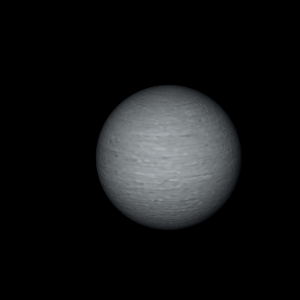|
|
Space Astro
|
Info for exoplanet "Heara"
| Scientific (actual) data |
|---|
| Name | KMT-2021-BLG-0909 b |
| Planet status | Confirmed |
| Planet mass | 1.26 |
| Semi major axis | 1.75 |
| Discovered | 2022 |
| Updated | 2022-07-18 |
| Publication | Published in a refereed paper |
| Detection type | Microlensing |
| Mass measurement type | Microlensing |
| Star name | KMT-2021-BLG-0909 |
| Right ascension | 265.62° |
| Declination | -27.64° |
| Star distance | 6480 |
| Star mass | 0.38 |
| Wikipedia article | KMT-2021-BLG-0909 b |
Back
| |
| Fictional info (?) |
|---|
| Suggested name | Heara |
| Planet type | Cold gas giant |
| The planet telescopically displays the complete range of phases, similar to Venus and the Moon, as it moves in its inner orbit relative to KMT-2021-BLG-0909, which reoccurs over the so-called synodic period approximately every 104 days.
The volume of water ice in the south polar ice cap, if melted, would be sufficient to cover the entire planetary surface to a depth of 8 meters.
The dark surface is mostly known for its large medieval plants known to survive hidden in craters by hunting plants. They are believed to be somewhat related to the Theus Kalke, have 6 arms and vary in size from 60 to 90 cm. The Tarebe Lyp can reproduce at temperatures from 30 to 110°C and also drought which is common near the poles. |
| Estimated population | 19000 |
| Atmosphere | Methane | 87% |
| Carbon dioxide | 6.3% |
| Water | 4.7% |
| Oxygen | 0.99% |
| Atmospheric pressure | 70 bar |
 |
| No known satellites |
| Google search for Heara |
|
Website by Joachim Michaelis
|
|
|
|